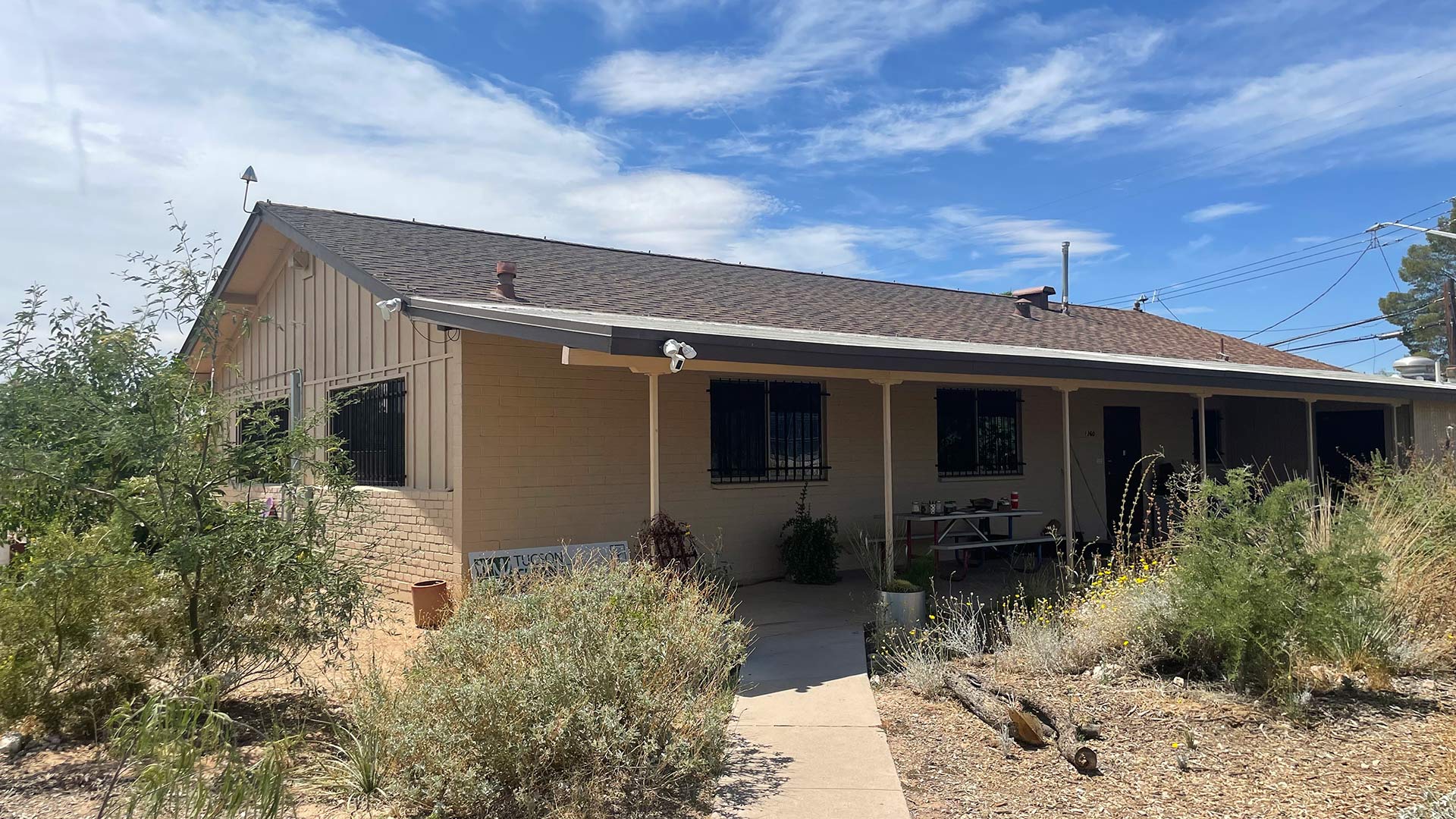 The offices of Tucson Clean and Beautiful on East Irvington
The offices of Tucson Clean and Beautiful on East Irvington
As we head into the new year, the mega-drought across the west shows no signs of dissipating. Media attention is focused most heavily on the dwindling water supply in the Colorado river, but at least one organization in Tucson is quietly working on a local solution - and finding success.
The main office of Tucson Clean and Beautiful on East Irvington is modest: a nondescript, mid-twentieth century ranch. From the outside, the yard behind the chain-link fence appears rough and unkempt. You might drive by the place every day and never notice it.
But as you come inside the front gate, it becomes clear there is nothing random about the landscaping
Inside, Nichole Casebeer, who leads Tucson Clean and Beautiful's Green Stormwater Infrastructure Program walks me through the front yard - what she calls a "rain garden." and a clear pattern begins to emerge. She says like all rain gardens, it has three distinct layers.
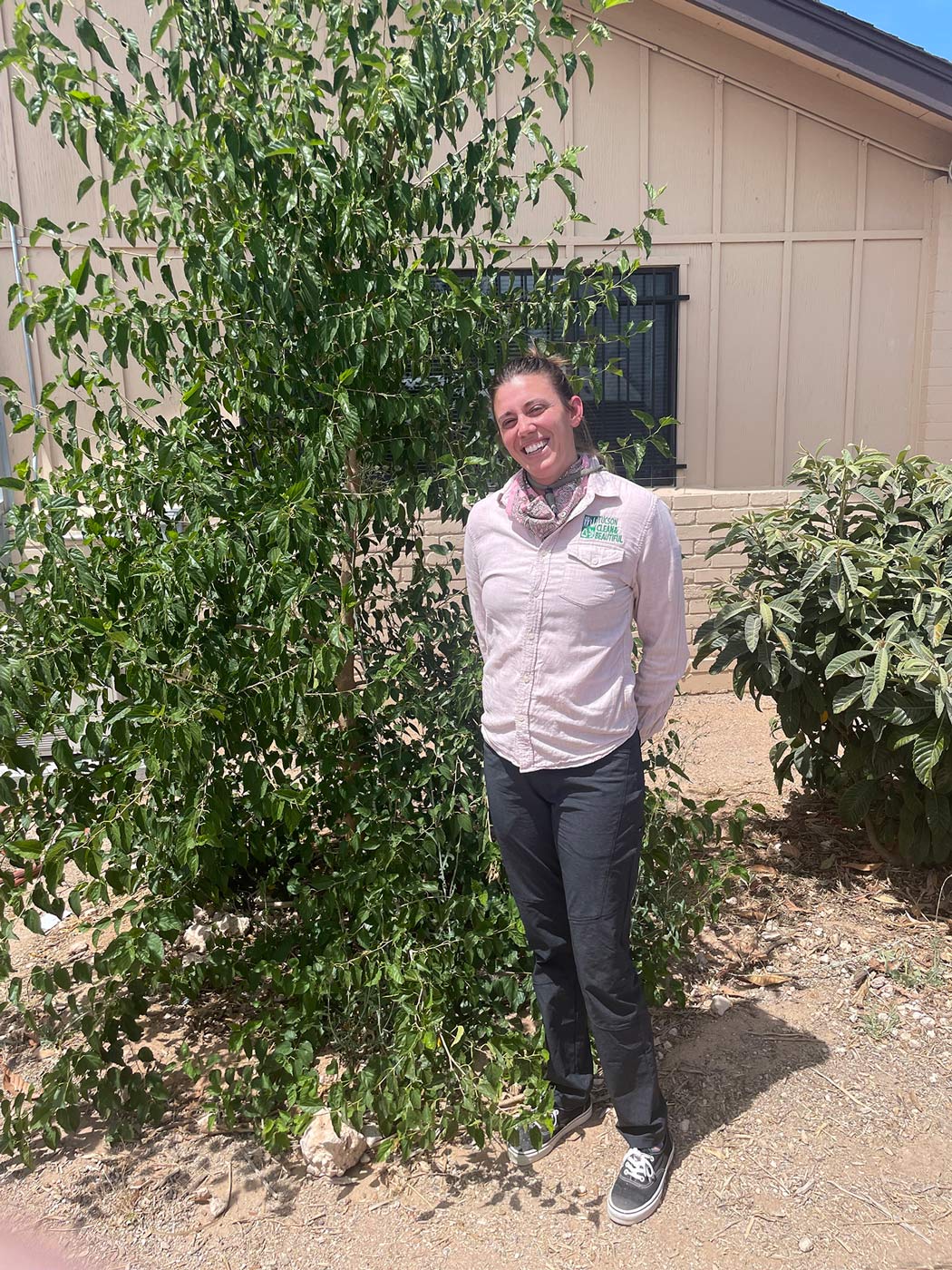 VIEW LARGER Nichole Casebeer,leads Tucson Clean and Beautiful's Green Stormwater Infrastructure Program
VIEW LARGER Nichole Casebeer,leads Tucson Clean and Beautiful's Green Stormwater Infrastructure Program "You basically get the overstory - bigger trees that provide a big shade canopy. They’re also gonna provide lots of leaf litter and mulch food for the soil and for the plants growing underneath it." she says. "Then we’ve got kind of a mid story in the middle - things like Creosote or Saltbush that provide structural habitat for birds and squirrels, the larger critters, and then at the ground level there are wild flowers and smaller shrubs that provide dense habitat for lizards and insects. They’re also going to stabilize the soil and prevent erosion, and protect and cool and keep water in the soil."
She says harvesting water this way taps the tradition and native expertise of the Tohono O'odham and their ancestors, the Hohokam, who were masters at collecting and storing rainwater by changing and reshaping the contours of the land, terracing, and interrupting the flow to allow time and space for the water to sink in.
“The first farmers and stewards of this land had this down pat and the way they contoured their terracing for farming, and the way that they harvested water, we use the same practices," she says.
"Everyone can make a difference"
She says TCB's Rainwater harvesting program depends on two basic convictions.
"We believe every individual can make a difference - especially in your own backyard," she says. "And even though we live in the desert and there seems to be a scarcity of water, there's really an abundance, if we learn how to harvest it correctly."
TCB focuses their work where the need is greatest - where they can have the most impact. That requires them to prioritize where the land and people are most vulnerable. And for those people, their services rain garden services are free.
"Part of our our priority work is in vulnerable neighborhood so we use a mapping tool called the equity score to look at areas that are the most vulnerable, which includes surface temperature, lack of tree canopy, and lack of space, but also includes economic measures, poverty, and other things that keep them from being able to participate and access resources," she says.
Community built on trust and dependability
Finding and connecting with their clients requires humility and flexibility, she says. And building trust takes time and the willingness to be present in their lives.
"We’ve spent a lot of time showing up for the community, supporting them in different ways, at different events. I think that it’s just word-of-mouth; if we show up for them we establish that trust where they can come to us with their needs and we can have a positive healthy relationship where we’re not forcing solutions on them but working directly with them to find solutions that are the best for the neighborhood based on that neighborhood's own priorities,"
TCB Outreach Coordinator Allison Castro says they approach each new relationship as one of a kind with unique needs and circumstances. And most important, TCB staff have to come ready to listen and learn.
"You really do have to open your doors and welcome people and show them that you’re there for them through it all," she says. "You know, showing up for them where they are already and where people already coexist and celebrate things, letting them know that we’re there for them with whatever they may need and supporting them outside of our own cause."
Growth and expansion from early beginnings
Over time, TCB's success in building community has allowed it to generate a large, engaged volunteer base. The organization was first established in 1984 with a mission to keep the community litter-free, beginning with its Adopt-a-Park and Public Areas program. Since then, TCB volunteers have contributed over 300,000 service hours at parks, washes, streets, and trails. In the past year alone, that included more than 20,000 service hours – valued at more than $400,000.
And in addition to that army of community volunteers and local financial contributions, TCB has built partnerships with government agencies like the City of Tucson and Tucson Water, as well as a variety of local and national businesses that help fund their projects. It has now grown into a multi-faceted environmental non-profit, becoming a key player in Mayor Regina Romero's Million Tree Initiative, serving as a provider of low-cost shade trees to groups and individuals, and now the Green Stormwater Program..
How much water can rain gardens add to the aquifer?
So, how much water can actually be harvested locally and can individual projects make a real difference against an unprecedented mega drought?.
Logan Byers responds with an emphatic yes. She leads the team building the residential rain gardens for TCB. I asked her to give me a feel for how much water is being harvested.
“Well we’re looking at the roof area and we are sizing the rain gardens to be able to infiltrate one inch of rain and on 1000 square-foot contributing watershed - usually a roof about 400 gallons, so I’m planning on doing 5 yards a month; that’s 60,000 gallons a year, 12 months a year, we’re looking at 600,000 gallons of water infiltrating into the ground per year and then on top of that if this program keeps rolling, we’re just adding that every year - almost 1,000,000 gallons of water in the ground," she says.
Parks and Public Spaces
In addition to turning individual yards into rain gardens, TCB's network also connects them to larger projects, such as rebuilding neighborhood traffic circles to collect runoff and turning open spaces and local parks into water-harvesting zones (See photo gallery below).
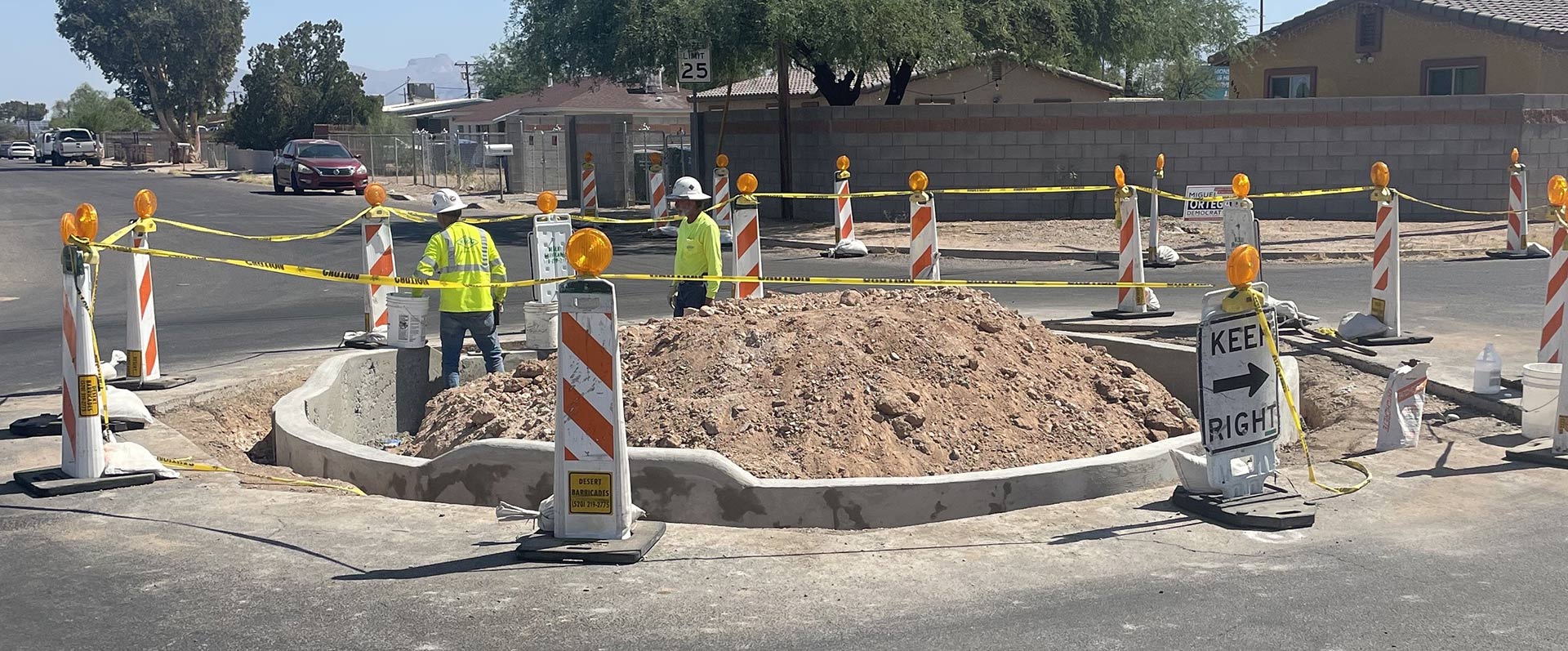 VIEW LARGER Workers turning a traffic circle into a rain garden
VIEW LARGER Workers turning a traffic circle into a rain garden Take La Mar Park for example. It is tucked away in the Rose neighborhood, just south of Ajo Rd along the east side of Interstate 19. It's a quiet, inviting space with shade trees, benches, gravel walkways and large boulders for kids to play on. But it wasn't always that way.
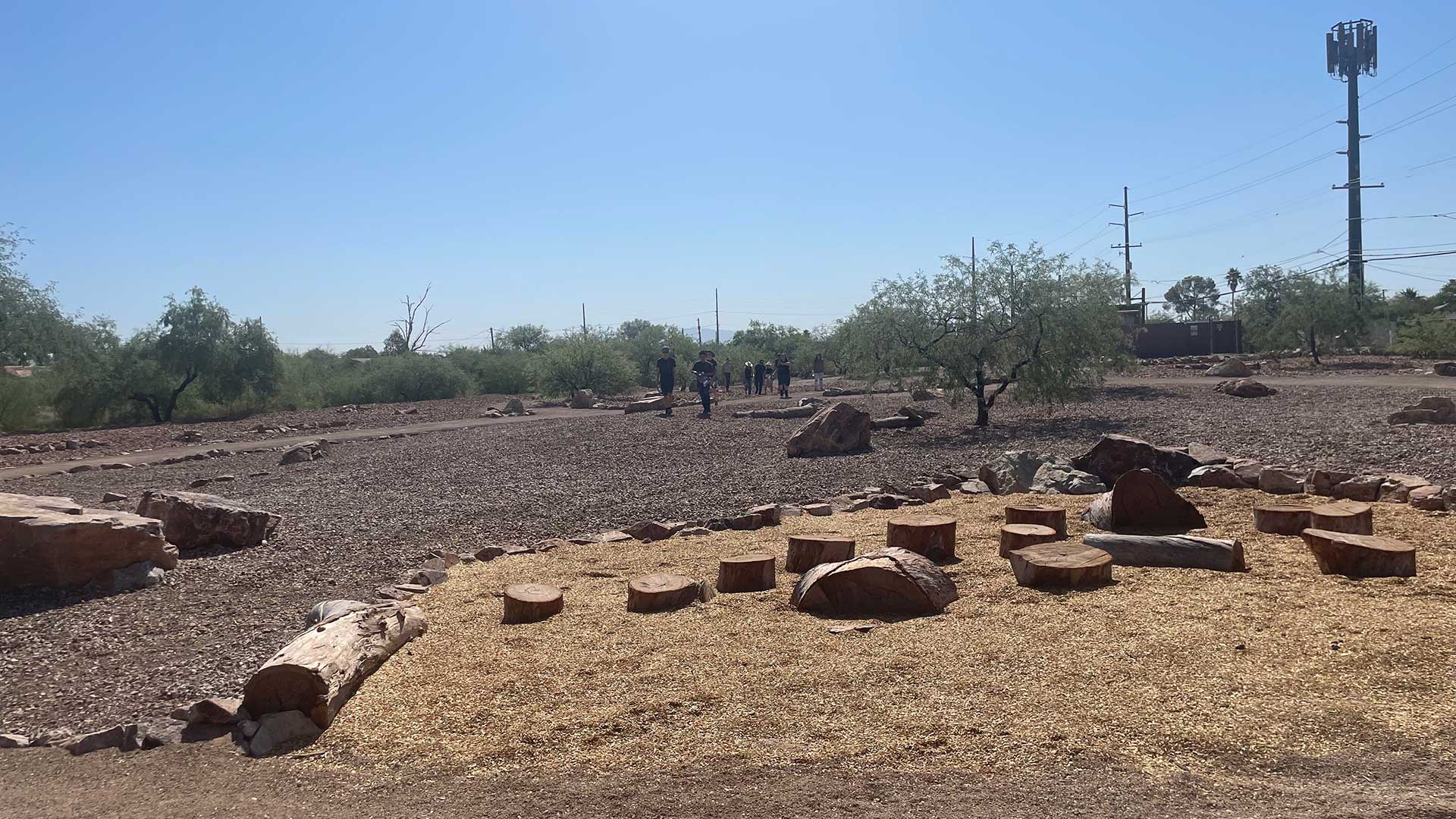 VIEW LARGER La Mar Park in Tucson's Rose Neighborhood has been transformed from a dump site to a working rain garden
VIEW LARGER La Mar Park in Tucson's Rose Neighborhood has been transformed from a dump site to a working rain garden Neighborhood association board member Richard Garza says until earlier this year, La Mar Park was an eyesore.
"I mean, it was an empty lot. It was technically a park, but nothing was done to it. It was actually used by contractors to dump construction waste," he says.
But he says they invited TCB to one of their association meetings. He says TCB listened and responded with some ideas that fit their needs perfectly. He said TCB alerted them to an $150,000 mini grant from Mystic Car Wash. They applied and got it and that got the ball rolling.
"Also," he says, "the city pitched in about 100 grand, too, and together they funded the TCB project that turned that empty lot into what it is now."
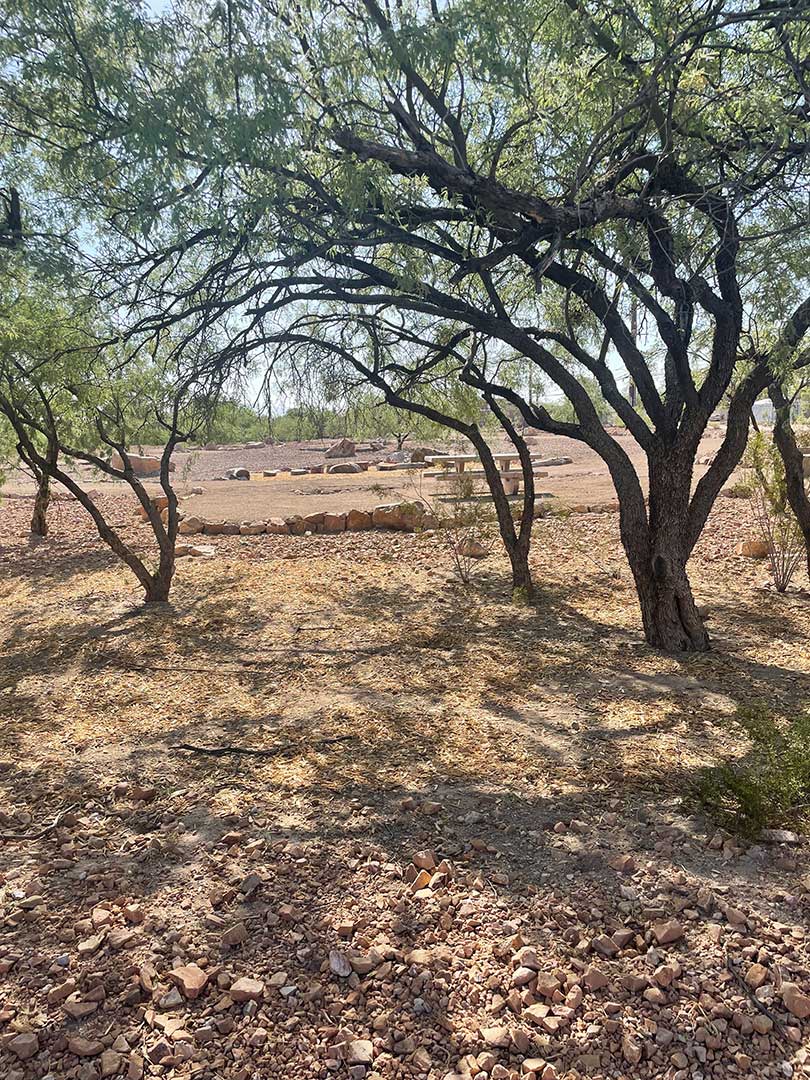 VIEW LARGER The rain garden in La Mar Park winds through a grove of Mesquite trees
VIEW LARGER The rain garden in La Mar Park winds through a grove of Mesquite trees Now in addition to the new amenities, the park topography has been recontoured to interrupt the flow of rainwater to give it time to penetrate the soil and sink in instead of running off into the nearby Rodeo Wash and under the Interstate. And dozens of new native trees and plants have been put in the ground to help hold that water long term and provide shade to slow evaporation.
"Anyone can create a rain garden"
Nichole Casebeer says the magic of rain-harvesting is in its simplicity and effectiveness. And although TCB's rainwater harvesting services are only free to those who qualify, she says anyone can build a modest rain garden at home.
"Building a rain garden is super-duper simple. It’s basically just digging a hole in the ground and putting some mulch and some plants in it and letting the rain and nature do the work for us."
And putting in a rain garden doesn't provide just a one-time benefit. It's an investment for both the individual and the community as a whole - the proverbial gift that keeps on giving. Once created, each new rain garden adds to a growing residual capacity enlarging the number of access points for capturing rainwater and storing it underground - and that benefits both individual Tucsonans and the aquifer Tucson itself depends on for survival.
Educating the next generation
In addition to the day-to-day work, TCB also has an eye on the horizon, It provides education for young Tucsonans, including summer camps. Nichole Casebeer says not setting up future generations with a clear understanding of the importance of protecting the environment would be dangerously short-sighted. Passing along their knowledge and experience - as well as the timeless wisdom of the Tohono O'odham and their forebears is vital to ensuring a healthy environment for generations to come.
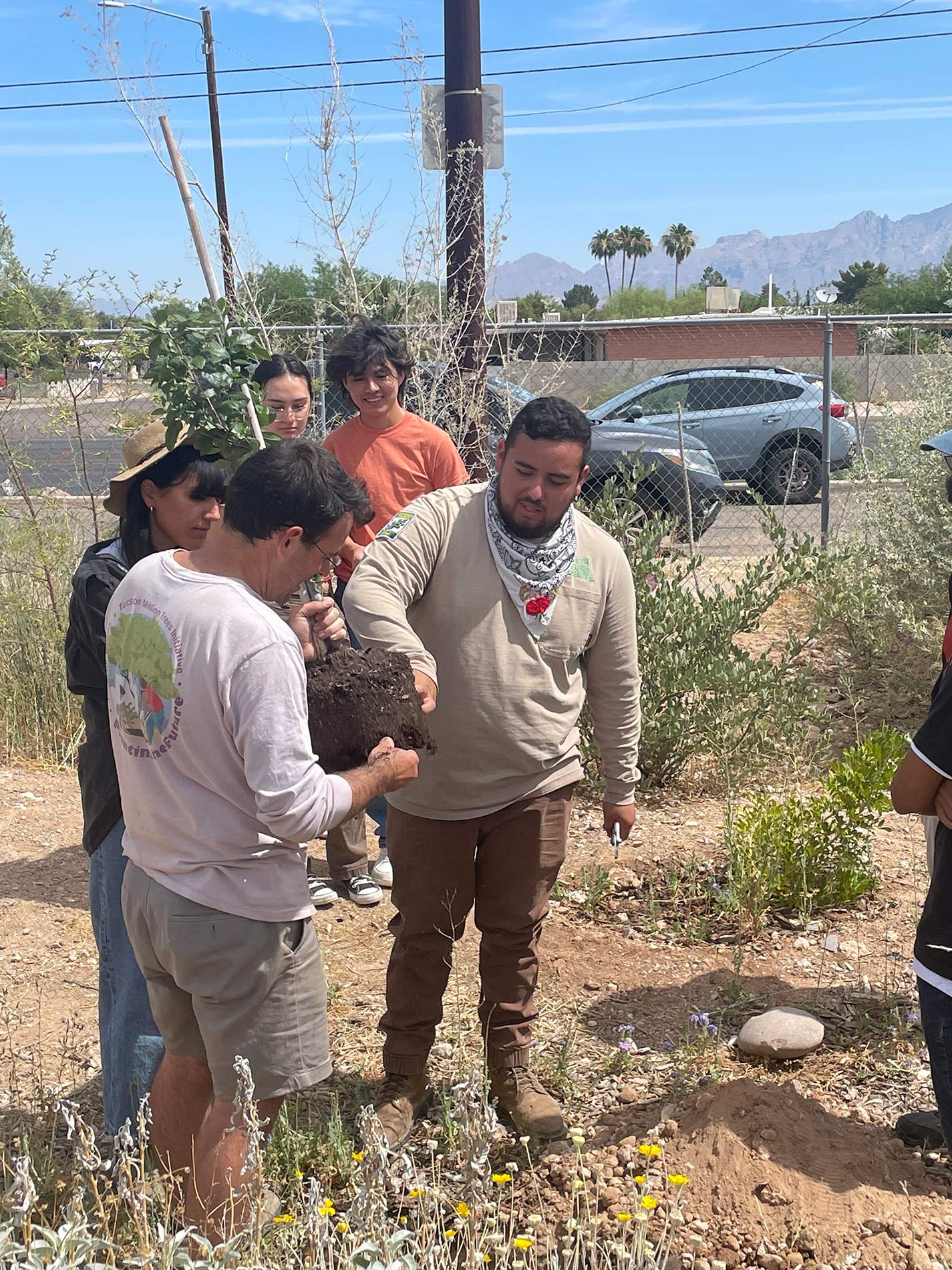 VIEW LARGER A forestry expert trains local youth how to plant trees as part of a Tucson Clean and Beautiful camp.
VIEW LARGER A forestry expert trains local youth how to plant trees as part of a Tucson Clean and Beautiful camp. Photo Gallery:
Rain gardens can fit almost anywhere
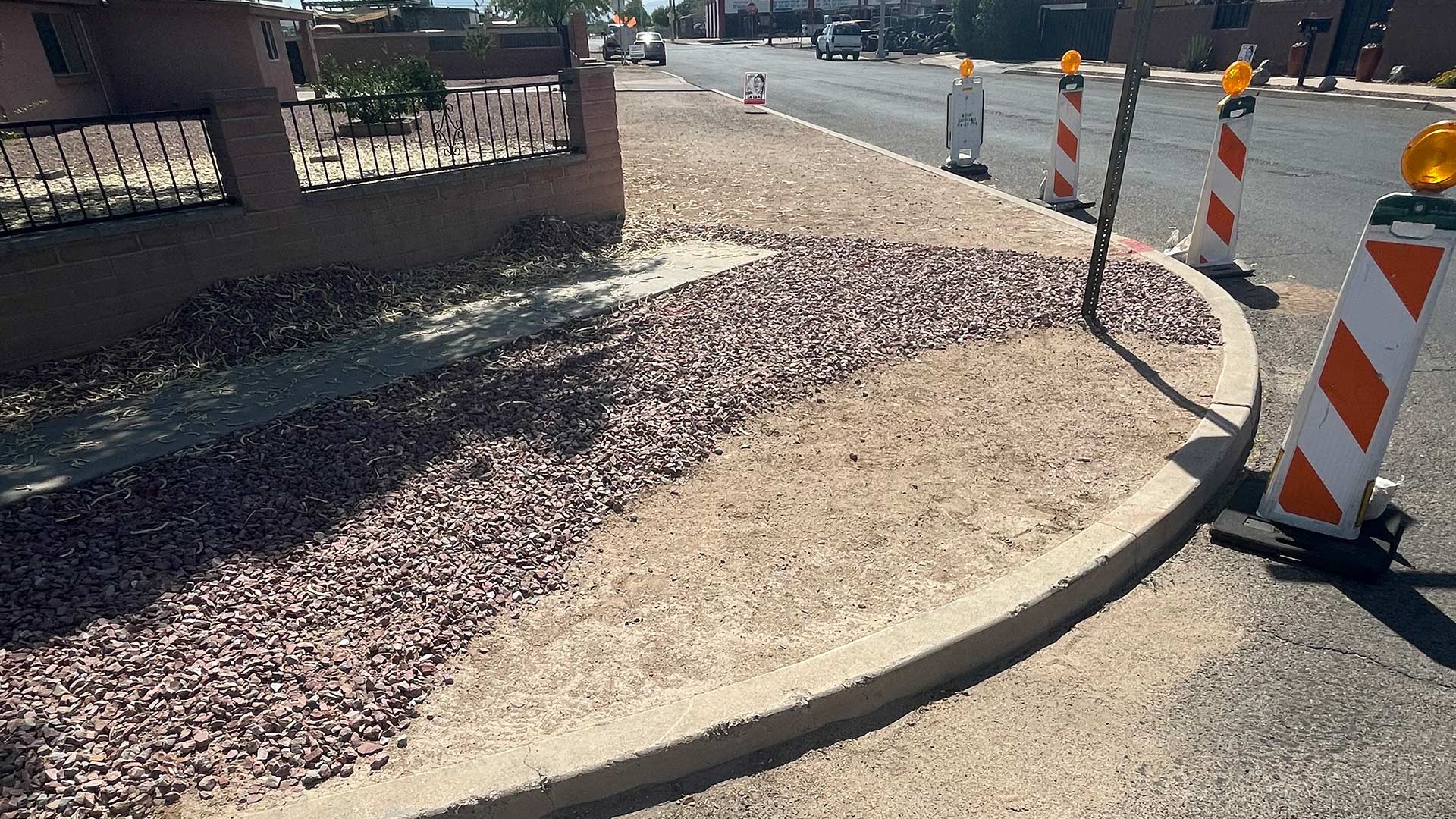 VIEW LARGER Rain gardens can be put in almost anywhere
VIEW LARGER Rain gardens can be put in almost anywhere Small front yard rain garden
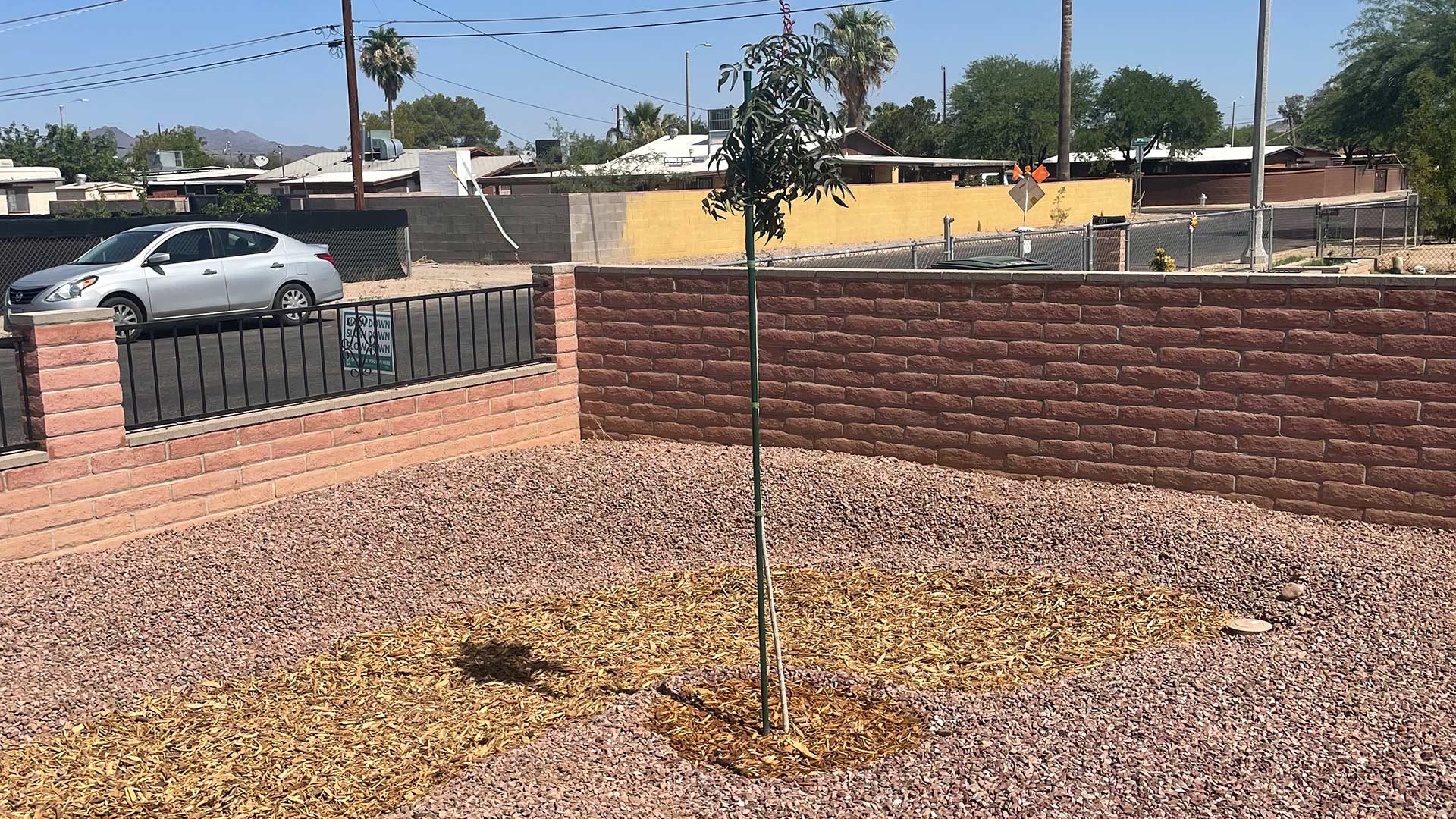 Small rain garden in the front yard of Rose Neighborhood association board member Richard Garza
Small rain garden in the front yard of Rose Neighborhood association board member Richard GarzaCompleted traffic circle rain garden
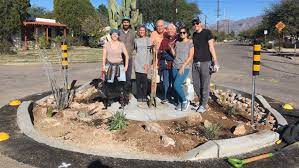 A Tucson traffic circle turned into a rain garden
A Tucson traffic circle turned into a rain gardenCompleted public-space rain garden
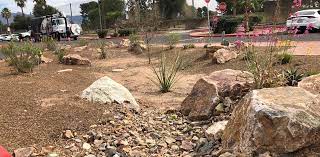 Completed rain garden
Completed rain garden 
By submitting your comments, you hereby give AZPM the right to post your comments and potentially use them in any other form of media operated by this institution.